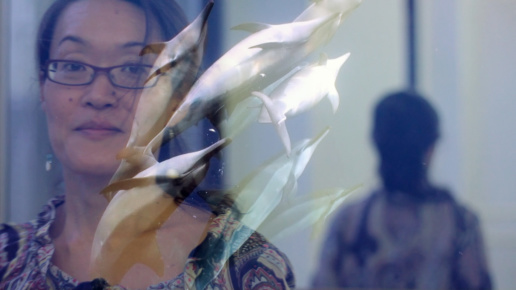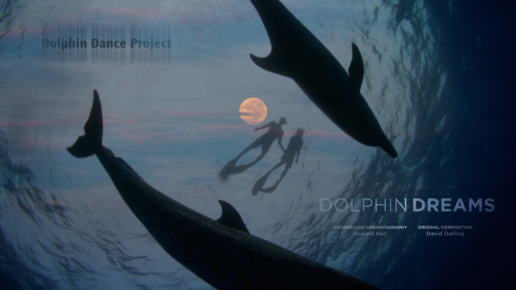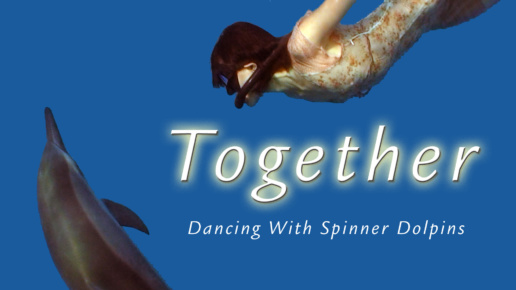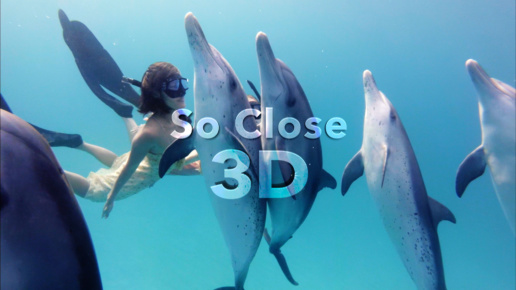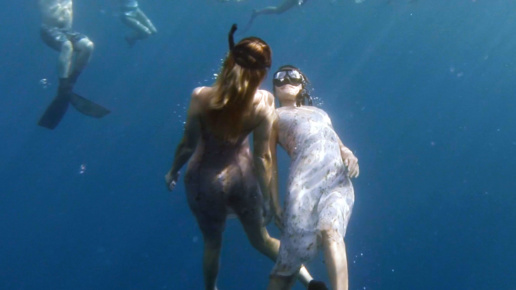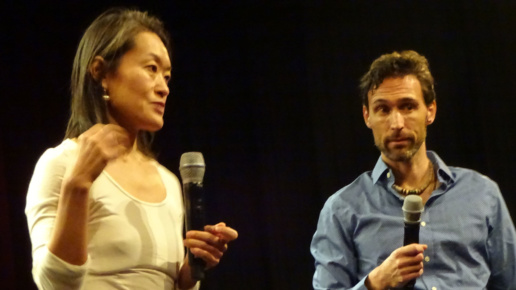Our Vision
Founded in 2009 by Chisa Hidaka, MD and Benjamin Harley, the Dolphin Dance Project produces films and video-based works that focus on the inter-species dance collaborations between wild dolphins and trained humans as a touchstone to inspire a paradigm shift in the way we think about the relationship between humans and other animals.
Our Ambition
The Dolphin Dance Project aims to offer ever more immersive experiences for audiences around the world – in cinemas, theaters, public institutions, and site-specific locations – through works that creatively incorporate technologies like 3D and VR and formats such as giant screen documentary, dance film, live performance, lectures and multi-media installations.
In Development
“Reunion” (working title) will be a giant screen (IMAX) feature film that reveals the unique artistic process through which wild dolphins and trained humans discover how to move harmoniously together underwater and forge profound connections of mutual understanding. As the personalities and histories of each dancer – human and dolphin – come to life, the dolphins emerge as much ‘persons’ as any human; and we’re left to ponder what this means for how we treat dolphins, their ocean habitats and all the creatures with whom we share this planet.
“Moving Towards Us” will be an interactive multi-media installation event that combines 3D video and live dance to make the experience of the human-dolphin dance viscerally and kinesthetically meaningful to a land-bound audience. As viewers enter the installation, 3D images of humans and dolphins dancing together deep under the ocean swirl across multiple screens, sweeping audiences into an unfolding process of creative experimentation and tender regard. A few times each day, live dancers perform, their movements embodying and magnifying the feeling of interconnectedness that unites the surrounding video. The 30-minute video loop offers viewers plenty of time to sink into the dolphins’ world.
Our Work
Through the use of participative camera techniques, kinetic editing, and cutting edge technology for underwater 3D stereography, our films and multi-media performances offer a visceral experience of meeting wild dolphins as creative equals. Eye to eye with a wild dolphin, viewers join the dance, spiraling and gliding in the depths of the ocean.
Highlights
Educational Lectures
Our interdisciplinary lectures feature our short films, along with behind-the-scenes stories, and educational content about dolphin biology and cognition, ocean ecology as well as dance and the creative process. Lectures can be combined with dance improvisation workshops and/or film screenings. Lectures have been given at: Educational insitutions including Harvard University, Smith College, Bennington College, Lawrence University, Hewitt School and others Conferences including Form in Question, New York University (2016), Curiosity3 Dance and Science, Columbia University (2014), Beneath the Sea Expo, Meadowlands, NJ (2013)
Our Team
The project is guided by the vision of the founders and their skills as artists and leaders
We value the expertise in production, exploration, and research that our advisors contribute to every phase of our work.
This work is being developed in collaboration with supremely talented dance artists who possess a rare combination of skills. With the fearlessness and discipline of expert free-divers, the movement sensitivity and expressivity of dancers, and a profound personal relationship with dolphins, they are able to dive deep into the dolphins’ realm, hold their breaths for minutes at a time, and engage in creative discovery with their partners, human and dolphin alike.
Our dolphin collaborators include members of a very special pod of wild Atlantic Spotted dolphins (stenella frontalis) who approached humans more than 30 years ago and have been studied and befriended ever since. Out of the 30+ dolphins who regularly rehearse with us, a select set of individuals who feature prominently in our films are listed below. We also regularly rehearse with an equally exceptional pod of wild Pacific Spinner dolphins (stenella longirostris).
Our Code Of Conduct
Every film, video clip or photo produced by the Dolphin Dance Project represents dolphins and humans, who chose to participate voluntarily and make a connection with a “someone” who is equal, if very different.
We never feed dolphins, nor do we coerce or train them in any way. We do not attempt to interact with dolphins if they are resting or feeding or show any signs of disinterest or annoyance. We interact with dolphins when they approach us out of their own interest or curiosity
We respect the dolphins’ culture of appropriate and inappropriate behavior. We rely on thorough study of scientific research and local human traditional knowledge as well as our own observations to shape when and how we engage with them. The mutual recognition of our shared intention to respect each other’s needs, desires, and cultural norms is the foundation of our work.
This is to avoid increasing the pressures that even the most eco-friendly human tourism imposes on pods of habituated dolphins.
The quality of our interactions is made possible through our specific training and artistic goals. Viewers should not expect similar experiences with wild dolphins that are encountered on swim-with-dolphin tours, and certainly not with captive dolphins.
Our intention is always to interact in ways that are safe and appropriate for humans and dolphins. We observe this Code of Conduct written by Kathleen Dudzinski, PhD who has led one of the longest standing field research projects on wild dolphins and is an expert on interacting with them. We abide by the National Oceanic and Atmospheric Association (NOAA) of the United States’ Marine Mammal Protection Act (MMPA), which established a moratorium on hunting, harassment, capture, or killing of dolphins or any marine mammal.
© Michele Hall

